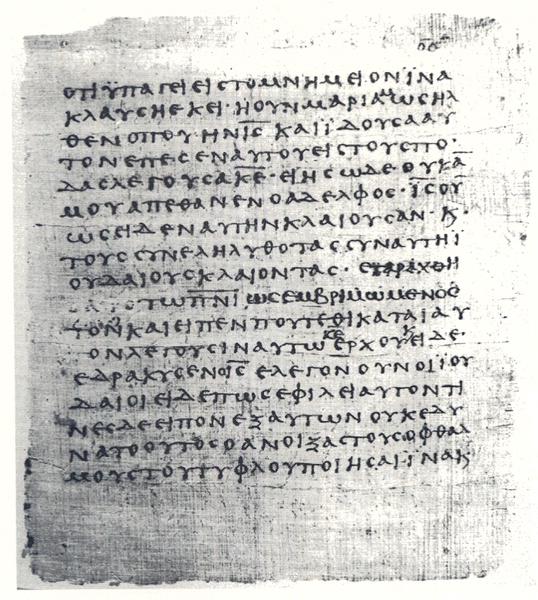Image Details

Courtesy of Bruce Metzger
“Jesus,” abbreviated, appears in three places on this papyrus codex page known as Gregory-Aland papyrus 66. Dated to about 200 C.E., this page is the oldest substantial fragment of the Gospel According to John and one of the oldest New Testament papyri. Written in Greek, it bears the text of John 11:31–37 (a portion of the story about the raising of Lazarus). In lines 3, 6 and 13, “Jesus” is written as a nomina sacra (sacred name), a contraction that uses the first and last letters of the name, Is, with a line over them. Similarly, the first and last letters of “lord,” ke, appear as a nomina sacra in line 5.
Jesus and the Teacher of Righteousness had several characteristics in common: Both served as teachers to a group of followers, both supported the Torah tradition and both came into conflict with other Jewish groups. Nevertheless, substantial differences distinguish them: The Teacher of Righteousness departed from Jerusalem, whereas Jesus arrived there; unlike the Teacher, Jesus was not a priest; they also differed in their relationships to their followers; and Jesus’ career was not defined in terms of conflict with another religious leader.
